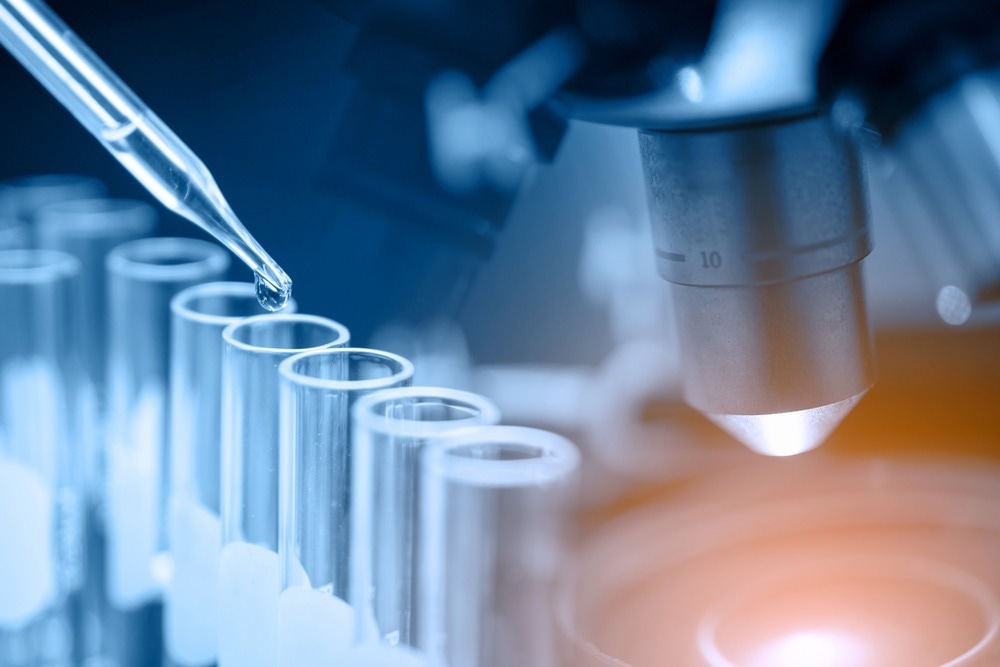Mass General Brigham researchers have developed the Luminescence CAscade-based Sensor (LUCAS), a quick, portable, and highly sensitive diagnostic tool for analyzing complicated biological materials. The study was published in Nature Biomedical Engineering.

Image Credit: totojang1977/Shutterstock.com
LUCAS generates 500-fold stronger and 8-fold longer-lasting bioluminescence signals than its diagnostic predecessors, addressing long-standing problems in point-of-care diagnostics.
Developing effective diagnostics is incredibly challenging, especially when you think about the size of infectious disease particles and the complicated biological fluids we’re attempting to identify them in. Finding an HIV particle in a human blood sample is like finding an ice cube in a jelly-filled Olympic swimming pool while blindfolded.
Hadi Shafiee, Ph.D, Study Senior Author and Faculty Member, Division of Engineering, Medicine and Renal Division of Medicine, Mass General Brigham
“With its novel enzyme cascade approach, LUCAS marks a substantial leap forward for sensing viruses in these complex biological samples,” added Shafiee.
Point-of-care diagnostics have become indispensable tools in many homes, as people assess their blood sugar, do pregnancy tests, and even perform their own COVID-19 exams. These diagnostics allow patients to avoid time-consuming, costly laboratory tests and are critical for disease detection, treatment, and monitoring.
However, existing diagnostics have limitations such as inaccuracy and low sensitivity. Bioluminescence can overcome typical limitations of other approaches, such as background noise, false positives, photobleaching, and phototoxicity.
Bioluminescence uses the same natural enzyme that makes fireflies shine to illuminate biological samples for imaging. Luciferase, an enzyme, is introduced to a sample to detect and identify viral particles. Then, luciferin molecules are added to the sample, causing a luciferase reaction to produce a burst of light. However, this reaction provides a faint and transient light signal.
Shafiee and colleagues devised a novel enzyme signal cascade to amplify and extend bioluminescence signals. They add another enzyme to the equation, beta-galactosidase, which binds to luciferin and continually releases it instead of allowing luciferin to float freely in the sample for one-time reactions.
This additional phase results in increased luciferin, luciferase responses, and bioluminescence. This approach allowed LUCAS to be 515 times more bioluminescent than non-LUCAS systems, with LUCAS signals remaining 96% strong after an hour.
The researchers tested LUCAS' effectiveness using 177 viral-spiked patient samples and 130 viral-spiked serum samples infected with SARS-CoV-2, HIV, HBV, or HCV. SARS-CoV-2 patient samples were acquired via a nasopharyngeal swab, whereas HIV, HBV, and HCV samples were obtained via a blood draw. LUCAS produced diagnostic results in 23 minutes, with an average accuracy of over 94% across all infections.
The researchers made LUCAS portable and simple, making it suitable for both high- and low-resource point-of-care settings. The scientists will next evaluate LUCAS' performance in additional biological fluids, as well as whether the approach can identify many pathogens at once. Shafiee further points out that biomarker identification for many diseases, including Alzheimer's, is a constantly changing field—having a tool like LUCAS ready to go when new biomarkers emerge might be useful in the coming years.
We always want to detect infection and disease as early as possible, as that can make all the difference when it comes to care and long-term outcomes. With our focus on developing diagnostic tools that are sensitive, accurate, and accessible, we want to make early detection easier than it has ever been and push personalized care into a new era.
Sungwan Kim, Ph.D, Study First Author and Postdoctoral Researcher, Mass General Brigham
In addition to Shafiee and Kim, Mass General Brigham authors include Giwon Cho, Jaebaek Lee, Khushi Doshi, Supriya Gharpure, Jisan Kim, Juyong Gwak, Joseph M. Hardie, Manoj K. Kanakasabapathy, Hemanth Kandula, Prudhvi Thirumalaraju, Younseong Song, Hui Chen, Daniel R. Kuritzkes, Jonathan Z. Li, and Athe M. Tsibris.
The National Institutes of Health partially funded the study under grant numbers (R01EB033866, R01AI138800, R01AI138800-05S1, U54HL119145, R33AI140489, and R61AI140489).
Journal Reference:
Kim, S., et al. (2025) Ultrasensitive and long-lasting bioluminescence immunoassay for point-of-care viral antigen detection. Nature Biomedical Engineering. doi.org/10.1038/s41551-025-01405-9